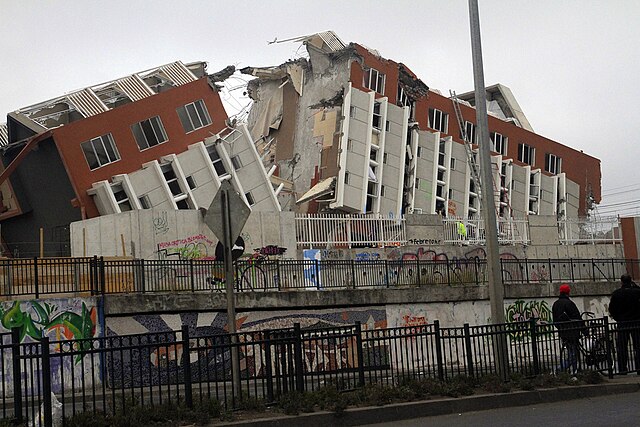Earthquake engineering
interdisciplinary branch of engineering From Wikipedia, the free encyclopedia
Remove ads
Earthquake engineering is the study of the behavior of building structures subject to earthquake impacts. It is a subset of civil engineering.

Objectives of the earthquake engineering
The main goals of earthquake engineering are:
- Understand what happens between buildings and the ground.
- Understand what strong earthquakes or tsunamis might do to building structures.
- Design, build and maintain structures to last during an earthquake while following building codes.[1]

Tools
A properly engineered structure does not necessarily have to be extremely strong or expensive.
The most powerful and affordable tools of earthquake engineering are vibration control technologies and, in particular, base isolation.
To test seismic performance of a building structure with experiments, it may be put on a shake-table that behaves like the earth shaking. The earliest shake-table experiments were performed more than a century ago. [2]
Remove ads
Tsunami preparedness and protection
Tsunami or a chain of fast moving waves in the ocean caused, mostly, by powerful earthquakes is a very serious challenge for people's safety and for tsunami protection of buildings and civil infrastructure. Those waves can flood coastal areas, destroy houses and even swipe away whole towns.[3]
Though tsunami can not be prevented, there are warning systems developed recently[4] which warn the population before the big waves reach the land to let them enough time to rush to safety.
Wikimedia Commons has media related to Earthquake engineering.
Notes
Related pages
Wikiwand - on
Seamless Wikipedia browsing. On steroids.
Remove ads
